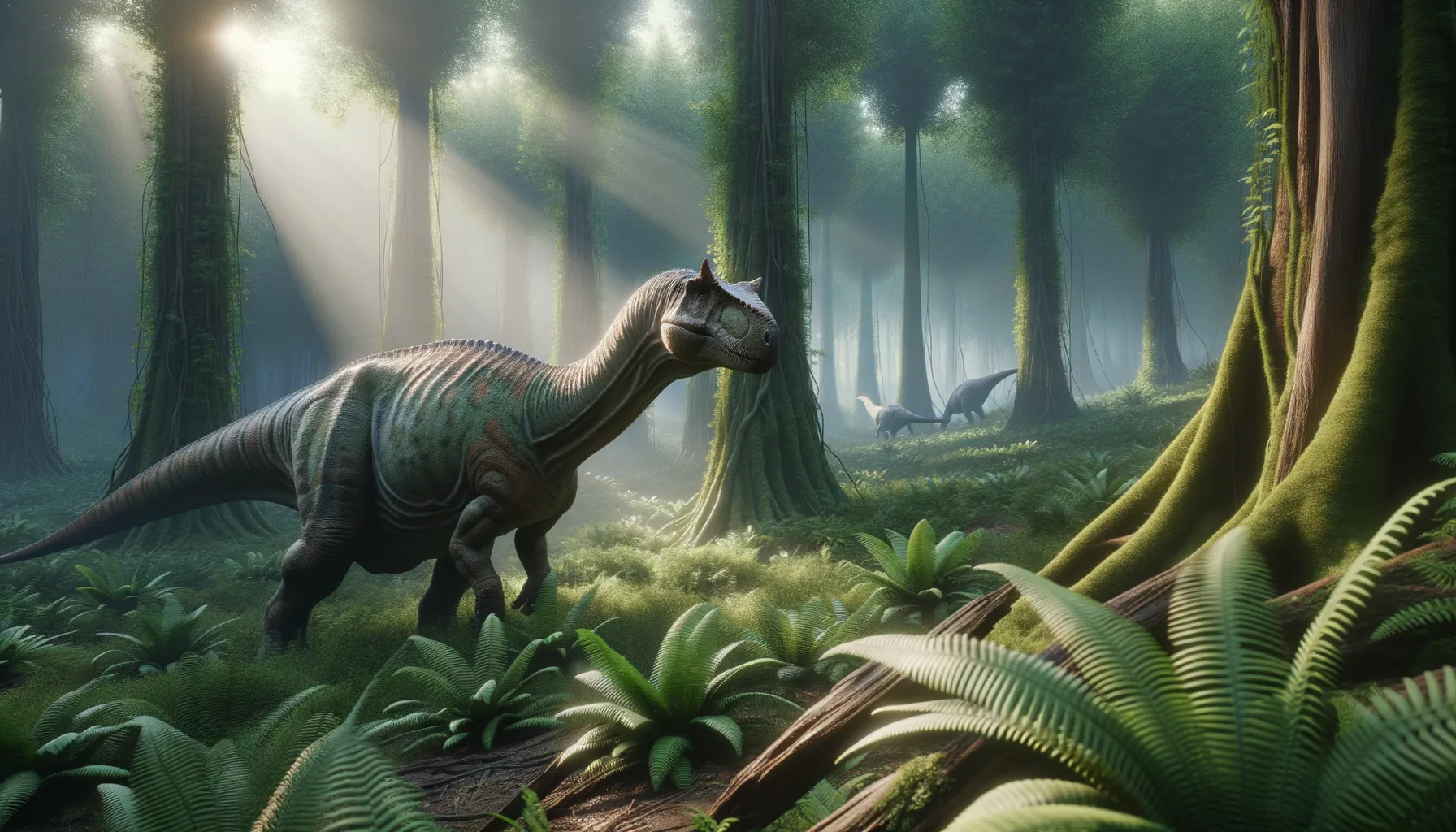
Brachypodosaurus
Sturdy limbs in prehistoric landscapes.
Period
Cretaceous
Length
Up to 6 meters long.
Height
Around 2 meters tall at the hip.
Weight
Approximately 2.5 metric tons.
Brachypodosaurus was a herbivorous dinosaur known for its stout limbs and robust body. It roamed the Earth during the Late Cretaceous period, primarily feasting on the lush vegetation available at the time. This dinosaur's fossils suggest it was well-adapted to thick forest environments, which offered both food and protection from predators.
Diet
Brachypodosaurus was a plant-eater, mainly consuming ferns, cycads, and other low-lying vegetation of its time. Its beak-like mouth allowed it to clip vegetation efficiently.
Hunting
As a herbivore, Brachypodosaurus did not hunt for food. Instead, it foraged in the dense underbrush, pulling down leaves and branches within reach.
Environmental challenges
Brachypodosaurus lived in an environment prone to seasonal changes, requiring it to adapt to varying food availability. Periodic droughts could have posed a threat, forcing it to move in search of water-rich areas. Predation was another challenge, particularly from large theropod dinosaurs, necessitating constant vigilance.
Speed
Relatively slow, suited for navigating dense vegetation.
Lifespan
Estimated to have lived up to 30 years.
First discovery
Discovered in India in the mid-20th century.
Fun Facts
- Brachypodosaurus was a dinosaur that lived during the Late Cretaceous period, approximately 70 million years ago.
- The name Brachypodosaurus means 'short-footed lizard', which is believed to relate to its relatively short limbs compared to other dinosaurs.
- Fossils of this dinosaur have been primarily found in India, providing insight into the ancient ecosystems of the region.
- Brachypodosaurus was a herbivore, meaning it primarily ate plants and likely had flat teeth ideal for grinding vegetation.
- Despite not being the largest herbivore of its time, Brachypodosaurus played an important role in its ecosystem, helping to shape the prehistoric plant life.
- Unlike the popular image of towering dinosaurs, Brachypodosaurus was, in fact, a medium-sized dinosaur likely about the size of a small car.
- The discovery of Brachypodosaurus has helped scientists better understand the diversity of dinosaur species that existed in the Cretaceous period.
Growth and Development
Brachypodosaurus experienced steady growth throughout its life, with juvenile specimens showing more gracile features that allowed for quicker movement. Upon reaching adulthood, it became more robust, adapting well to its herbivorous lifestyle. Development included growing strong limbs capable of supporting its weight.
Habitat
This dinosaur inhabited subtropical forests with plenty of thick foliage, providing ample food sources. The area offered a warm climate with seasonal rains, promoting the growth of lush vegetation. Brachypodosaurus often stayed close to rivers and lakes, utilizing these resources for hydration and food.
Interaction with other species
Brachypodosaurus likely coexisted with other herbivorous dinosaurs, competing for similar food resources without much aggression. It played a role in the ecosystem by maintaining the plant population through grazing. This dinosaur might have been targeted by larger predators, which it avoided using camouflage and group behavior.
Natural lifespan
In ideal conditions, Brachypodosaurus could live up to three decades.
Reproduction
Reproduction involved laying eggs in nests possibly constructed from vegetation, in safer, concealed parts of its habitat. It’s likely that these dinosaurs showed at least some parental involvement in guarding the nest until the eggs hatched. Hatchlings were vulnerable and required growth time to develop their sturdy limbs.
Social behaviour
Brachypodosaurus might have exhibited some degree of social behavior, possibly living in small herds for protection against predators. Group living would have allowed them to forage more efficiently and care for their young. Communication would likely include visual signals and vocalizations to alert each other of danger.
Fossil locations
Fossil remains of Brachypodosaurus have been primarily discovered in the Indian subcontinent. These discoveries provide insights into its distribution and behavioral patterns. Its fossils contribute to understanding Late Cretaceous ecosystems in Asia.
